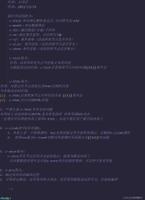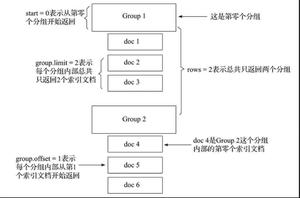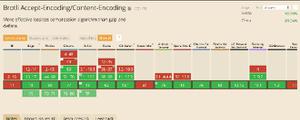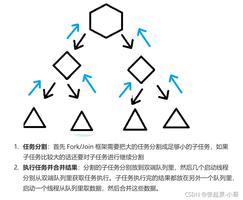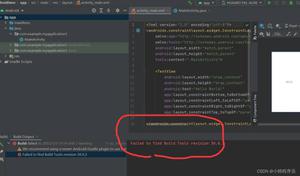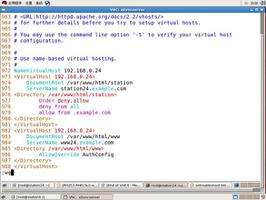详解AngularJS 模块化
学习要点:
- 控制器模块化
- 指令模块化
- 过滤器模块化
- 服务模块化
- 定义值模块化
- 使用模块工作
第一步:创建一个模块
// function : define module named exampleApp
// param detail :
// param one : module name
// param two : relay on modules collection
// parms three : config information
var myApp = angular.module("exampleApp", ["exampleApp.Controllers", ["exampleApp.Controllers", "exampleApp.Filters", "exampleApp.Directives", "exampleApp.Service", "exampleApp.Values"])
在视图中应用模块
<!-- use module -->
<html ng-app="exampleApp">
...
</html>
第二步:定义值
var valueModule = angular.module("exampleApp.Values", [])
// defind value
var now = new Date();
valueModule.value("nowValue", now);
第三步:定义服务
var serviceModule = angular.module("exampleApp.Service", [])
// function : define a service named days
serviceModule.service("days", function (nowValue) {
this.today = nowValue.getDay();
this.tomorrow = this.today + 1;
})
第四步:定义控制器
var controllerModule = angular.module("exampleApp.Controllers", []);
// function : define a controller named dayCtrl
// the controller include two param:
// param detail:
// param one : name of controller
// param two : a factory function
// the param $scope of factory function show information to view
controllerModule.controller("dayCtrl", function ($scope, days) {
// days : use custom service
// today is ...
$scope.day = days.today;
// tomorrow is ...
$scope.tomorrow = 7;
})
将控制器应用于视图
<!-- use controller -->
<div class="panel" ng-controller="dayCtrl">
<div class="panel-header">
<h3>Angular App</h3>
</div>
<!-- if the day is undefined, show unknow -->
<!-- use filter and data binding -->
<h4>Today is {{ day || "unknow" }}</h4>
<h4>Tomorrow is {{ tomorrow || "unknow" }}</h4>
</div>
第五步:定义指令
var directiveModule = angular.module("exampleApp.Directives", []);
// function : define a directive named highlight
// it accepts two param
// param one : the name of directive
// param two : a factory method
directiveModule.directive("highlight", function ($filter) {
// get the filter function
var dayFilter = $filter("dayName");
// param detail:
// scope : view scope of action
// element : the element which uses the custom directive
// attrs : the attrs of the element
return function (scope, element, attrs) {
// console.log(dayFilter(scope.day));
if (dayFilter(scope.day) == attrs['highlight']) {
element.css("color", 'red');
}
}
})
将指令应用于视图
...
<h4 highlight="Saturday">Today is {{ day || "unknow" | dayName }}</h4>
...
第六步:定义过滤器
var filterModule = angular.module("exampleApp.Filters", []);
// function : define a fitler named dayName
filterModule.filter('dayName', function () {
var dayNames = ['Sunday', "Monday", 'Tuesday', 'Wednesday', 'Thurday', 'Friday', 'Saturday'];
return function (input) {
// input is the value of data binding
return angular.isNumber(input % 7) ? dayNames[input % 7] : input % 7;
};
})
将过滤器应用于视图
<!-- 用 | 分开 -->
<h4 highlight="Saturday">Today is {{ day || "unknow" | dayName }}</h4>
<h4>Tomorrow is {{ tomorrow || "unknow" | dayName }}</h4>
最后,下面是完整的代码:
文件一:example.html
<!DOCTYPE>
<!-- use module -->
<html ng-app="exampleApp">
<head>
<title>Angluar test</title>
<meta charset="utf-8"/>
<link rel="stylesheet" type="text/css" href="css/bootstrap.min.css" rel="external nofollow" >
<link rel="stylesheet" type="text/css" href="css/bootstrap-theme.min.css" rel="external nofollow" >
</head>
<body>
<!-- use controller -->
<div class="panel" ng-controller="dayCtrl">
<div class="panel-header">
<h3>Angular App</h3>
</div>
<!-- if the day is undefined, show unknow -->
<!-- use defined directive "highlight" -->
<!-- use filter and data binding -->
<h4 highlight="Saturday">Today is {{ day || "unknow" | dayName }}</h4>
<h4>Tomorrow is {{ tomorrow || "unknow" | dayName }}</h4>
</div>
<script type="text/javascript" src="js/angular.min.js"></script>
<script type="text/javascript" src="values/exampleValue.js"></script>
<script type="text/javascript" src="controllers/exampleController.js"></script>
<script type="text/javascript" src="filters/exampleFilter.js"></script>
<script type="text/javascript" src="directives/exampleDirective.js"></script>
<script type="text/javascript" src="services/exampleService.js"></script>
<script type="text/javascript">
// function : define module named exampleApp
// param detail :
// param one : module name
// param two : relay on modules collection
// parms three : config information
var myApp = angular.module("exampleApp", ["exampleApp.Controllers", "exampleApp.Filters", "exampleApp.Directives", "exampleApp.Service", "exampleApp.Values"])
</script>
</body>
</html>
文件二:services/exampleService.js
var serviceModule = angular.module("exampleApp.Service", [])
// function : define a service named days
serviceModule.service("days", function (nowValue) {
this.today = nowValue.getDay();
this.tomorrow = this.today + 1;
})
文件三:values/exampleValue.js
var valueModule = angular.module("exampleApp.Values", [])
// defind value
var now = new Date();
valueModule.value("nowValue", now);
文件四:directives/exampleDirective.js
var directiveModule = angular.module("exampleApp.Directives", []);
// function : define a directive named highlight
// it accepts two param
// param one : the name of directive
// param two : a factory method
directiveModule.directive("highlight", function ($filter) {
// get the filter function
var dayFilter = $filter("dayName");
// param detail:
// scope : view scope of action
// element : the element which uses the custom directive
// attrs : the attrs of the element
return function (scope, element, attrs) {
// console.log(dayFilter(scope.day));
if (dayFilter(scope.day) == attrs['highlight']) {
element.css("color", 'red');
}
}
})
文件五:controllers/exampleController.js
var controllerModule = angular.module("exampleApp.Controllers", []);
// function : define a controller named dayCtrl
// the controller include two param:
// param detail:
// param one : name of controller
// param two : a factory function
// the param $scope of factory function show information to view
controllerModule.controller("dayCtrl", function ($scope, days) { // days : use custom service
// today is ...
$scope.day = days.today;
// tomorrow is ...
$scope.tomorrow = days.tomorrow;
})
文件六:filters/exampleFilter.js
var filterModule = angular.module("exampleApp.Filters", []);
// function : define a fitler named dayName
filterModule.filter('dayName', function () {
var dayNames = ['Sunday', "Monday", 'Tuesday', 'Wednesday', 'Thurday', 'Friday', 'Saturday'];
return function (input) {
// input is the value of data binding
return angular.isNumber(input % 7) ? dayNames[input % 7] : input % 7;
};
})
以上是 详解AngularJS 模块化 的全部内容, 来源链接: utcz.com/z/319691.html

